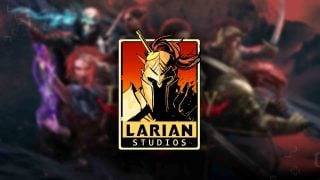The storied history of Fire Emblem localizations is something I’ve delved into many times in the past, but at this point the series’ present speaks for itself. Here we are with a massive and contemporary title holding up Nintendo’s summer, letting the series’ growth speak for itself. Best of all, this one stands with some of the best I’ve experienced in the series while offering up new twists and a compelling plot that’s only fully told across multiple playthroughs. It’s a strategy RPG dream come true, and the new tactics it’s learned are worth the extra study time.
Growing and evolving from the groundwork laid by some of its most immediate predecessors, Fire Emblem Three Houses is more than just a new entry in the franchise. It’s a title that’s taken inspirations from those that came before, as well as others in the RPG genre. Most importantly though, it’s a case of Nintendo continuing to deliver incredible experiences to the Switch, the only system that makes this the first home console Fire Emblem in 12 years and a continuation of the series’ flourishing time on handhelds. Be ready to set some time aside though, as Three Houses presents a slow yet satisfying burn that’s worth your attention and your decisions.
The Empire, the Kingdom, and the Alliance
In spite of them being separate from the game’s core, grid-based gameplay, the experience of Three Houses is defined most by two key elements. One of these is right there in the name. By splitting the experience of the game into multiple routes, each with their own groups of characters and motivations, it accomplishes what Fire Emblem Fates tried to previously do in a much more realized, streamlined, and ultimately enjoyable way. While the narrative has multiple threads, the inherent replayability of seeing things through the lenses of the Black Eagles, Blue Lions, and Golden Deers makes this one of the potentially longest and content-rich Fire Emblems of all.

My initial runthrough was with the Black Eagles, and while I won’t be spoiling anything, it was clear to me by a certain point that the experience would be vastly different had I gone with a different House. To the game’s credit, it didn’t make me feel like I was “missing out” on anything even though I knew, by design, I wasn’t seeing the entire story. Speaking of its story is another high point. Full of intrigue and world-building, it does away with several “expected” Fire Emblem elements in its pursuit of doing something it can call its own. While some of its twists were a bit more telegraphed than others, the game remains engaging with strong vocal performances and writing throughout.
The Houses and their stories are just one part of the equation though, as the setting that allows them to be complements the game from start to finish. Fódlan, its varied territories, and its mythology are all woven into not just expository information, but its characters’ motivations and personalities. Support conversations frequently referenced families and territories that, at first, felt like superfluous fluff; but in time many of these received further elaboration, or at least enough consistent influence to bring the continent’s politics and history to life alongside the core narrative. It does wonders for making the plot feel more actualized, and is served by some character-driven side chapters as your progress.
Thank you, my teacher
The element of Three Houses that deserves most of the credit, though, is its new school setting and time management mechanics. Once the game begins, you are placed in the role of professor at Garreg Mach Monastery, a centrally located bastion that is both the seat of religion in the region and an academy for its three, divided powers to send its next generation of nobles. In that role, you’re both responsible for leading them in battle and deciding how they’ll develop their talents. Sounds like vintage Emblem, until you start to see all the parts in motion.
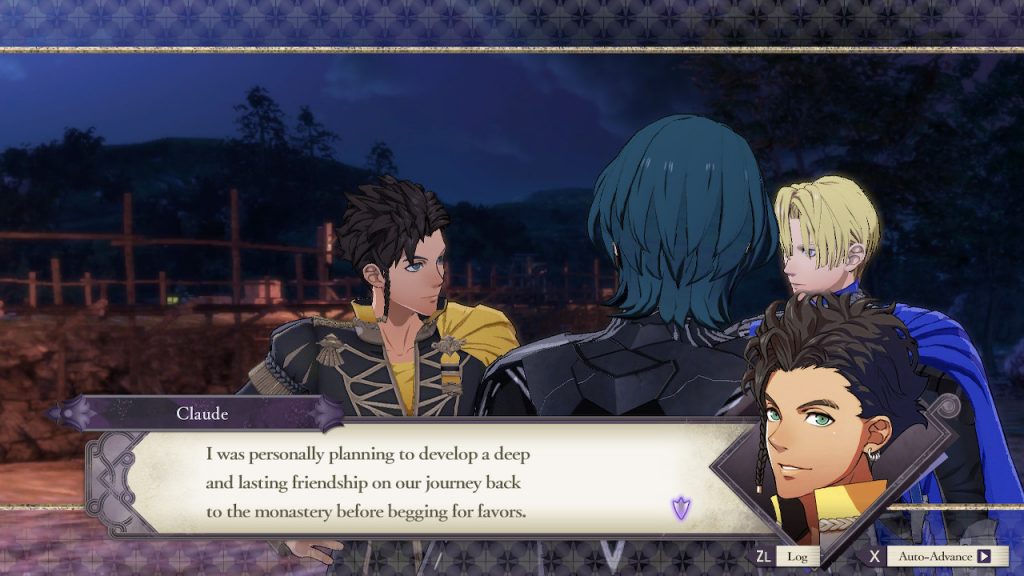
Unlike previous games, this Fire Emblem has a supreme degree of freedom in how you class and equip your characters even compared to some of the most recent releases. For example, a character of mine had a stat line and initial equipment that made it seem like they’d be a good fit for a bow-using class. On one hand, it’s fully possible to keep them on that path and only ever give them bow based classes and skills. On the other, I was able to improve their skills in lances and riding and make them a paladin down the line, something I felt my lineup was lacking. It wouldn’t have been impossible to make them take up axes or magic or anything else, and I could potentially work in that direction still and see results. Doing so drifts you away from optimization, but when the payoff is that kind of flexibility, it’s worth it to experiment.
Barring some unique cases and a couple gender-specific options, all classes are available to all characters. You just have to devote enough effort into improving their skills to meet prerequisites to get them certified, and can swap in and out of classes you’ve unlocked easily. While they improve through in combat experience (take a sword into battle, you’ll get better at using it each time you do), you’ll see the biggest returns from instructing your students directly.
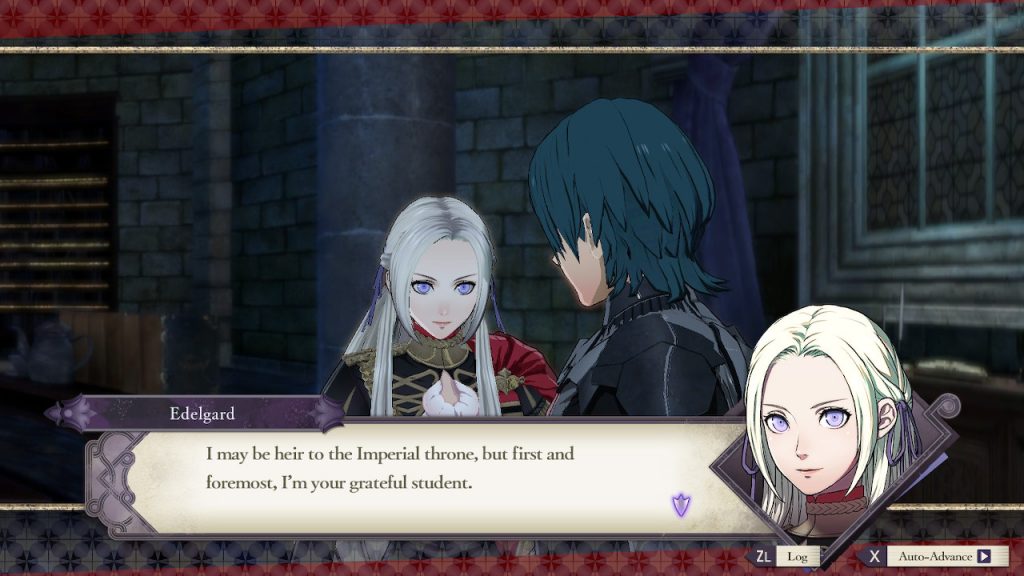
Based on how motivated they are, you can pour bonus stat increases into their skills to push them in certain directions. You have to choose carefully, as you have a finite number of chances to do so in a given lecture (which does increase over time). There are other means, such as holding a seminar on a day off in order to get some bonus learning in, or putting a couple students on a task to be completed at the end of the week. Once you’ve selected these, it all happens in a hands-off way, to the point you can even let the game choose who to instruct for you, but having this much influence and to be able to see it all at once makes developing your characters more involved and interesting. It can’t be all work and no play though, and that’s where another big addition to this Fire Emblem comes in: exploring the Monastery.
Perfect teatime
Previous entries in the series were primarily menu based affairs between battles, with Shadow of Valentia’s dungeons being an exception. Now, though, you’re able to walk throughout the Monastery to chat with your students and interact with them in various ways befitting your role. Every in-game month saw me devoting time to having a meal or two with characters I wanted to get closer to, buying presents for ones who needed a little extra motivation, having tea with students from other classes to get to know them better (and maybe recruit them to my own house), or getting some instruction of my own from fellow faculty.
While it could be argued that this is still just menus with space between them, the details and theming made all the difference. It gives every corner of the Three Houses experience a shared identity that meets (and exceeds) expectations when it comes to support conversations and plot development that all come together to make battles feel more impactful. It also puts another element of Fire Emblem into play constantly, that being the impact of choices.
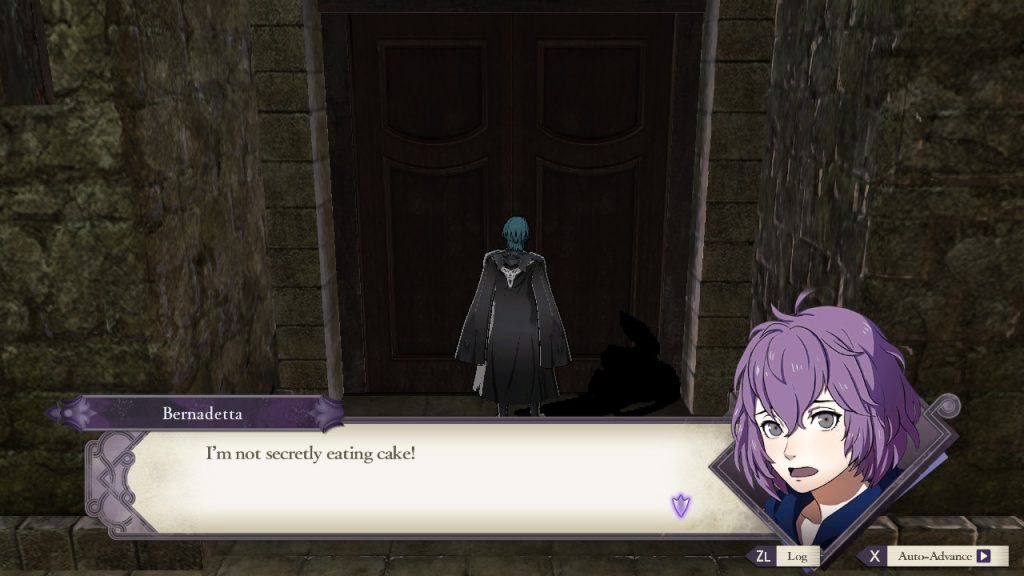
While there are moments of severe, decision making importance (that the game does tell you about so you know a given choice will have repercussions), you also have to manage your time wisely. When roaming the Monastery, most actions that see you gaining something eat into your time. Especially in the mid-game, after I had learned some ins and outs, but before my characters were stacked — I caught myself weighing time management heavily to make the most of these instances. With a game that has permanently missable content and a finite amount of time, I may have stressed over some points just a bit too much. That’s a personal trapping, though, and if you don’t exactly care about making the “most” out of a day and seeing everything, you’ll be just fine in that department.
It does have the unfortunate side effect of sometimes making a choice feel like it’s happening “just because” — and you’re not able to roll that time into something like battle practice or extra instruction. It’s all a balancing act, and while it’s rewarding when you can make it all come together, it did occasionally frustrate or overstay its welcome. I will praise it for sticking with its time motif though, something that shows up early in the story and persists through its menus and the returning gameplay ability to rewind turns if you make a mistake in the heat of battle.
The time for battle draws near
As a longtime Fire Emblem strategist, the grid and turn based maps are where the game felt most familiar. Selecting and directing characters will be familiar to anyone who’s played a game in the series (though it might surprise anyone only accustomed to Heroes with how much more you can do), and looks better than ever with this being the first 3D entry in the series since the Wii. Even with my fondness for the classic sprites (which do show up in menus), I was drawn into the style the game has captured with its characters and environments. It’s a natural evolution, with models, portraits, and cutscenes embracing the more anime-inspired direction the franchise has taken in the past decade.

One trapping I did occasionally come across were some maps being a bit too large for my liking. This could be because at the times I encountered them (early game) I didn’t have any mounted or flying units, and could be alleviated based on how you approach them or what route you selected. Eventually, these became less problematic as I gained more options, but it made the game’s start a slow one. What was welcome though was the wealth of information on offer from a UI standpoint. With the added real estate of Switch’s screen size and its capabilities, text and menus (and even sub menus) were clear and informative. That extends to the entirety of Three Houses, but the added aggro lines letting me know which of my characters enemy units were targeting were lifesavers when it came to planning moves.
While monsters and other fantastic foes are nothing new to the series, here they’re scaled up to occupy multiple tiles and require a unique approach to prevent them from overwhelming. By attacking them at specific spots in turn, you can both weaken them and deny them the ability to counterattack, letting you strike with impunity. Ganging up on tough enemies is a strategy that’s served me well in the past but with these it becomes a necessity. Some chapters have them as your only type of foe or as a surprise corruption of a boss character, while others had them as a third faction that must be dealt with independently of an antagonizing army. Their uniqueness starts to fade away even as new types are introduced, but for their differing handling tactics they’re a welcome addition.
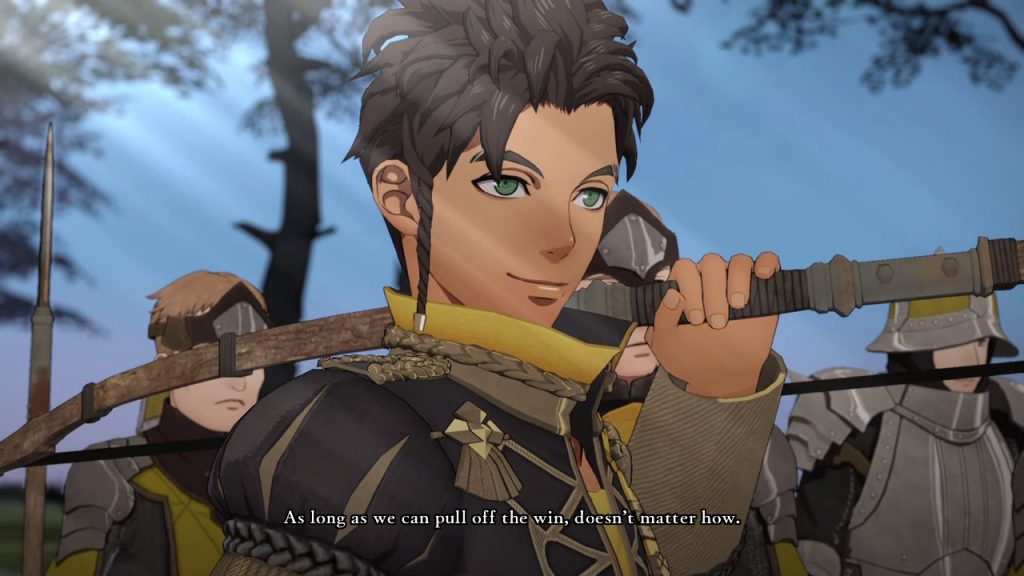
These monsters and other threats can also be dealt with via the new Battalion system. As you play, you’ll unlock squadrons of soldiers you can assign to your characters, giving them stat boosts and access to unique “Gambit” techniques. These take the place of your more standard attack when selected, but have additional effects that allow for a more tactical approach to situations, such as taking an enemy’s ability to move away for their next turn. They also play a part in handling monsters, as using them can draw their attention to a particular unit to keep weaker ones safe during your assault.
Ultimately though, it’s not so much the new elements themselves and how they fit into the existing Fire Emblem formula that matters most. Compared to something like Awakening’s Pair Up mechanic, these largely feel less defining to Three House’s gameplay. In this particular playthrough, I didn’t feel compelled enough to rely on Battalions or even turn to them outside of experimentation. They mix with the military academy setting and are a show of new graphical ability, but those facets never mattered more than my developed characters themselves. While it’s still too early to see how much they and their accompanying Authority stat might shape this game’s identity and meta, they certainly didn’t detract from the dozens of hours I’ve spent with it so far. It just feels like the bulk of that time and my investment was in the lead-up to battles versus the minutiae of battle itself.
Let the lesson begin
I’ve walked away (and right back into) Three Houses more pleased than I have been with a Fire Emblem since Awakening back in 2013. This feels like a step forward in storytelling that Fates dreamed it could be, held together by a setting and characters that complement it rather than simply exist in it. As has been seen before, the Switch is now a haven for Nintendo series reinventing or reinvigorating themselves, and this is no exception. Hardly a day has gone by since I started playing this game that I haven’t thought about it at length, and with plenty more to still experience, I feel my time belongs to it for the foreseeable future.
For anyone looking for a game that will hold them for weeks and potentially even months on end, Fire Emblem: Three Houses will be happy to educate you on the fine points of strategy RPGs. While there’s much to manage and the weight of management can slow things down and spread combat itself out, seeing all your long term plans and goals come together is rewarding and enjoyable. I came in knowing I’d love the gameplay, but I walked away with so much more, as Three Houses has introduced me to a cast and world that feels involved and realized. If you’re thrilled at the idea of conspiracy, this combat-filled school life deserves to be in your library and will hopefully have you turning time back to the beginning once the credits roll.
Leave a Comment
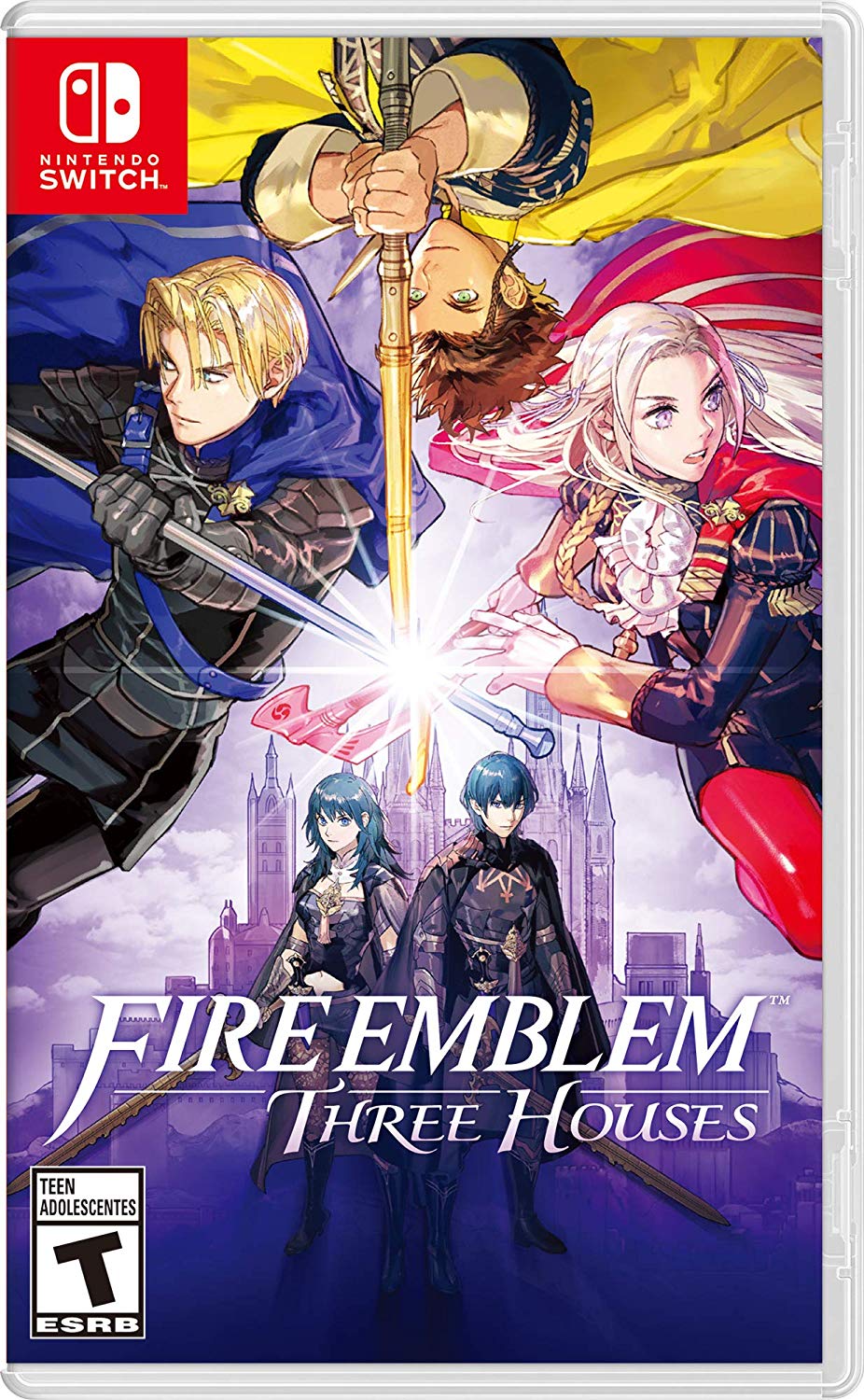
System: Nintendo Switch
Release Date: July 26, 2019
Categories: Adventure
Publisher: Nintendo
Developer: Intelligent System, Koei Tecmo Games


